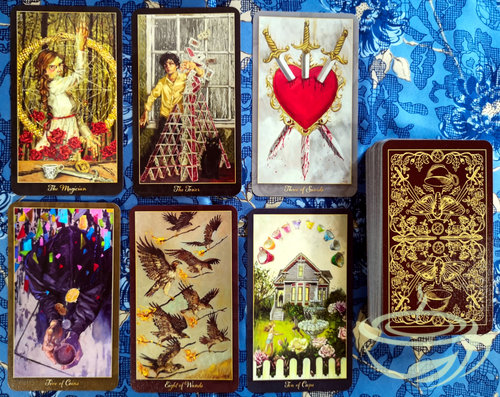The Mermaid Tarot
About the Author
Leeza Robertson (Las Vegas, NV) is the author of Tarot Court Cards for Beginners and Tarot Reversals for Beginners, and she’s the creator of two tarot decks, the Mermaid Tarot and Animal Totem Tarot. When she doesn't have her nose inside a book or her fingers dancing across a deck of cards, she runs her online class called the Moonbeamers, which focuses on tarot and the moon's cycles.
Julie Dillon (Los Angeles, CA) is a freelance artist whose clients include Simon & Schuster, Penguin, Tor, and Wizards of the Coast. She is the winner of several Hugo, Chesley, and Locus awards for best artist.
Product details
Cards: 288 pages
Publisher: Llewellyn Publications (February 8, 2019)
Language: English
ISBN-10: 073875109X
ISBN-13: 978-0738751092
Product Dimensions: 5.8 x 2 x 8.2 inches
Photo Information
- Taken with samsung SM-G960W
- Focal Length 4.3 mm
- Exposure Time 1/75
- f Aperture f/1.5
- ISO Speed 50







